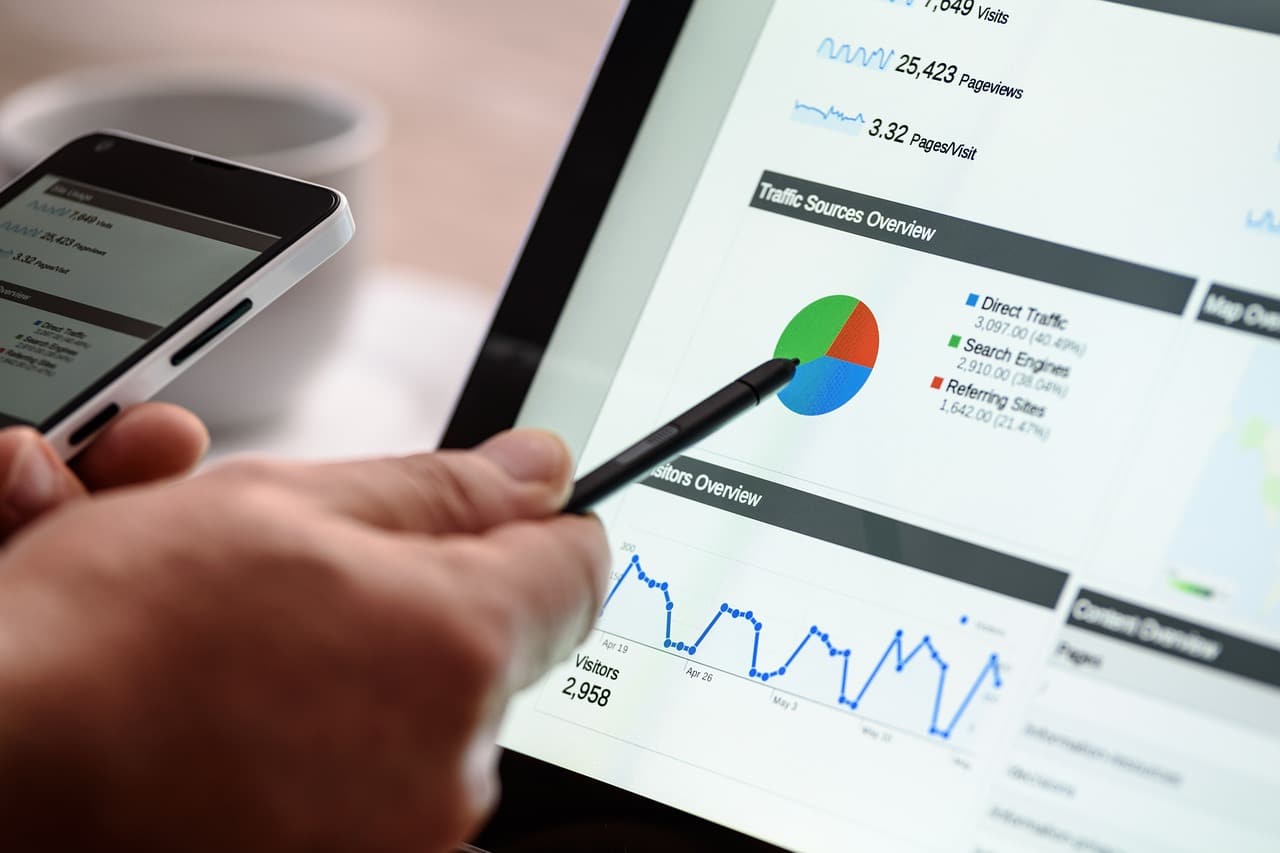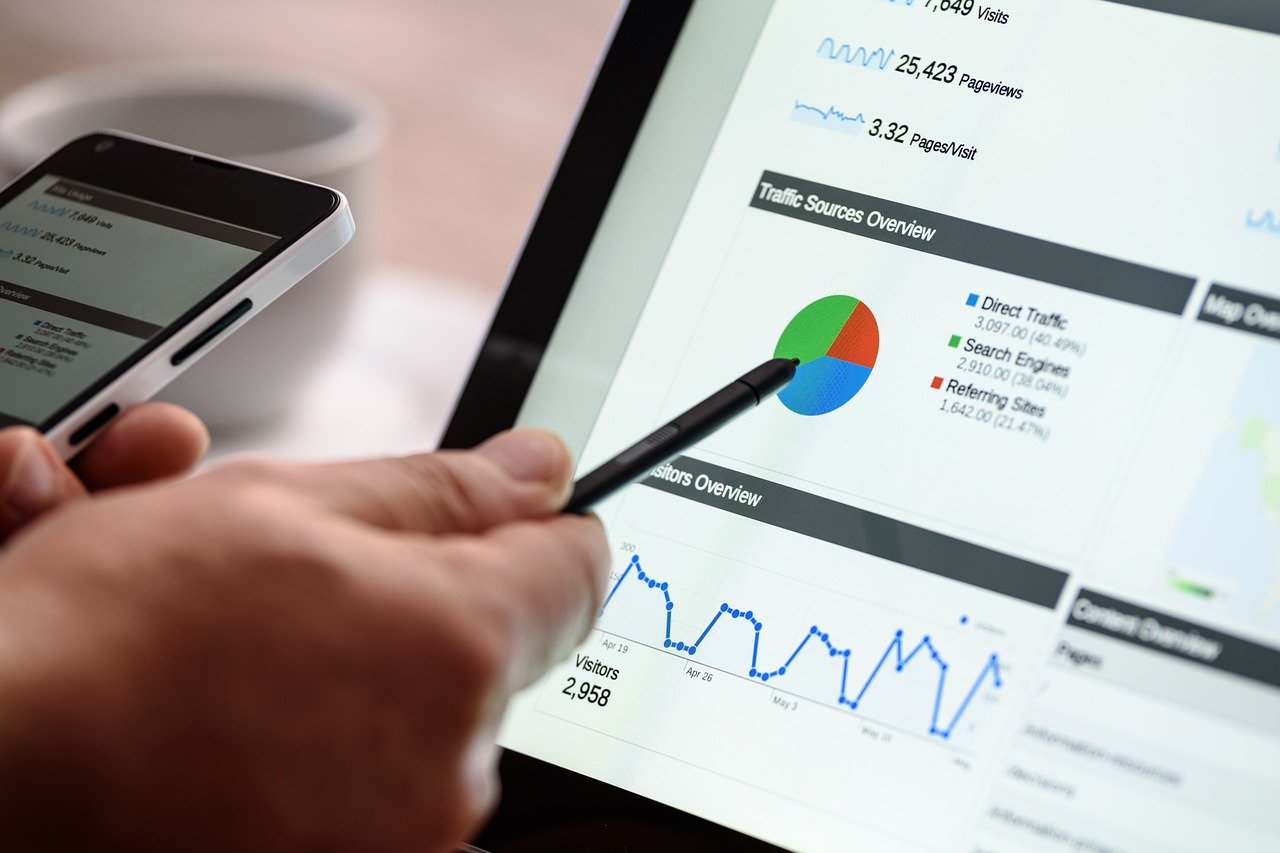A key indicator for managing the optimization of an e-commerce website, the conversion rate always figures prominently in activity reports and dashboards.
While it depends on variables such as the platform used, the field of activity, the type of device used to connect or the seasons, it often serves as a basis for comparison with the competition.
But how do we determine a site’s e-commerce conversion rate, and above all, how can we improve it? 
Defining the e-commerce conversion rate
The e-commerce conversion rate is the ratio between the number of transactions (completed sales) on your site and the number of unique visitors.
To calculate it, simply divide the number of transactions carried out on your site by the number of unique visitors.
The result is a percentage.
Calculating an e-commerce conversion rate only makes sense over a given period.
For example, in the previous month, the site recorded 100 orders, while 10,000 unique visitors consulted the site.
Your e-commerce site’s conversion rate for last month is therefore 1%.
Why is it important to know your e-commerce conversion rate?
The conversion rate indicates the health and performance of your online store.
The higher the conversion rate, the higher the site’s revenue.
So it’s vital to do everything you can to increase your conversion rate.
The conversion rate indicates the percentage of visitors you succeed in convincing to complete an order.
But beware, it can vary greatly depending on your field of activity, as well as a number of other factors.
By comparing your e-commerce conversion rate with those of your best-performing competitors, you can see where you stand in the market.
Be careful, however, not to simply compare figures.
You need to make sense of them, and to do so, you need to take into account a number of comparison criteria.
The sites being compared must be… comparable, operating in the same field.
We need to take into account the type of product, its cost and value, the media on which transactions are carried out (computer, tablet, smartphone…), the browser, the operating system or even the geographical location.
It’s hard to compare a multi-product site offering a comprehensive catalog with a specialized site selling just one product or a small, clearly identified range.
Some statistics on e-commerce conversion rates
Average e-commerce conversion rate
The average conversion rate for e-commerce is just under 2%(source), with wide variations depending on the products sold.
Conversion rates by product category
The highest conversion rates are in the sale of health and wellness products, at 3.78%. This is followed by arts and crafts (3.05%) and household appliances (2.39%). (source)
Conversion rates by platform
Supermarkets come out on top, with a conversion rate of almost 9%.
This is hardly surprising.
Indeed, drive and click & collect services, whose introduction was accelerated by the health crisis, have greatly contributed to the improvement in the conversion rate of these platforms.
Seasonal e-commerce conversion rates
The conversion rate is also seasonal.
There are two clearly defined periods of the year when the conversion rate rises significantly: Black Friday – Cyber Monday and/or the sales season, with its (sometimes) bargains, and the festive season.
Conversion rates by media type
Finally, in most sectors, the use of tablets and mobiles has largely caught up with that of computers in e-commerce.
But this is not the case for the retail sector.
No doubt it’s still more comfortable to prepare your shopping list from your computer, with a large screen for a better “view” of the products.
On the other hand, the conversion rate remains better on the computer (2.57% vs. 1.80% on mobile).
In fact, the user experience during the purchasing process is often better on the computer.
The exception is specialized applications.
E-commerce visits via a dedicated app more often lead to orders.
Installing an application generally means that the user is a regular customer, and conversion rates are therefore often higher. 
How can you improve your e-commerce conversion rate?
Increasing your e-commerce conversion rate means increasing your revenue.
So it’s particularly important to take this into account.
To convince a visitor to order from your e-commerce site, you can work on the design and ergonomics of your site, as well as on highlighting your products.
Setting up a system of customer reviews and comments is obviously a plus.
Finally, well-positioned call-to-actions and an easy-to-use payment system will encourage your visitors to complete their order.
Improve the design and ergonomics of your e-commerce site
You can offer the best products at the best prices, but if the navigation on your site is too complex and your visitors can’t find what they’re looking for, they’ll quickly move on.
Design is important, because it’s what will catch your visitors’ eye.
Food, high-tech and car parts are not presented in the same way.
From the very first page, visitors need to know where they are and what they’re going to find.
Ergonomics are also very important.
Your site must be perfectly clear and easy to use.
Users should be able to find what they’re looking for in just a few clicks, without having to think twice.
Product categories must be visible, legible and easy to access.
Users rarely come to an e-commerce site as they would a physical store.
They need to be able to get straight to the point, to the essentials, and find their product straight away.
Showcase your products
A photo, a few words of description and a price are not enough.
The visual is very important, as it’s what will immediately attract the customer.
The photos and/or videos used to present a product must be of good quality and show it to its best advantage.
These media allow the customer to really see what they can buy, and a good quality visual is bound to encourage the act of buying.
Take care in writing product descriptions too.
Develop your arguments as if you were face-to-face with the customer, detailing the product’s features and highlighting its advantages.
Take advantage of a customer’s visit to a product page to suggest similar products, whether in terms of functionality or price.
If the current product doesn’t really meet their expectations, it’s important to offer them one or more alternatives, otherwise they may leave the site to look elsewhere.
Display customer reviews
Quality visuals and descriptions are essential.
But what’s more likely to convince a customer to buy, is to read positive reviews from other people who have bought and used the product.
Customer reviews can be reassuring about the quality of the products and services you provide.
Use call-to-actions
Call-to-actions are a highly effective way of increasing e-commerce conversion rates.
Correctly positioned on the site to be clearly visible, they can facilitate the trigger click and lead to an order.
Choose an easy-to-use payment solution
Many users abandon their shopping carts at the checkout stage because the proposed solution is too complex.
To limit this phenomenon, you need to implement the simplest possible payment solution.
Customers demand ease and security.
Integrate a one-click purchasing solution, and registered users will be able to place an order easily.
For others, the payment process needs to involve as few steps as possible to be efficient.
Personalized support to improve your e-commerce conversion rate!
As you can see, the e-commerce conversion rate is a key element in your business.
You need to constantly question yourself and try to improve it.
But beware: comparing like with like, and evaluating your conversion rate in relation to other sites that are too different, could lead you to make the wrong decisions. As an experienced developer specializing in e-commerce, I can help you audit and improve the conversion rate of your online store.
Contact me today to discuss your requirements.



